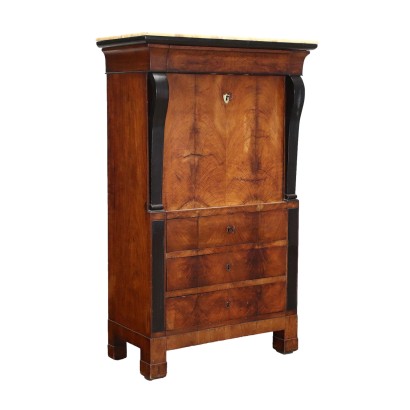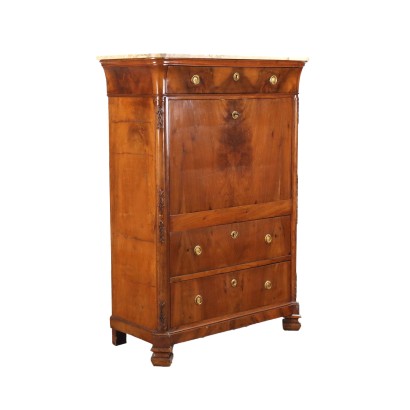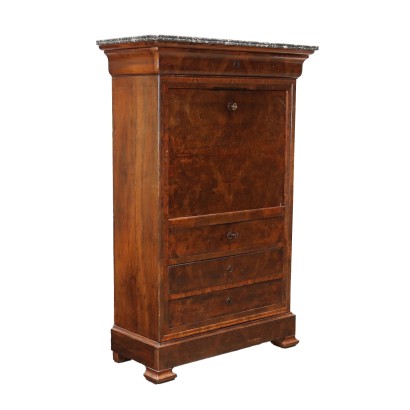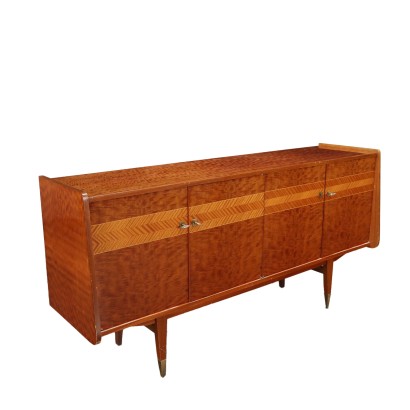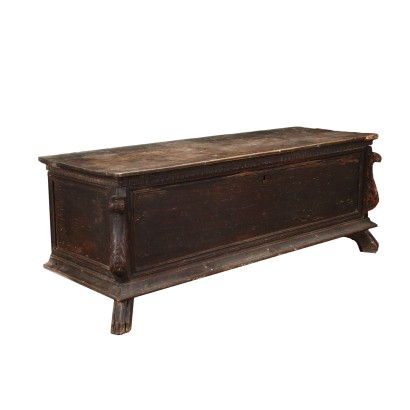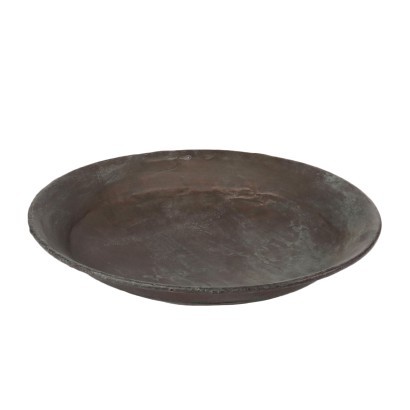Restoration Secrétaire Walnut Italy XIX Century
Features
Style: Bourbon Restoration (1815-1830)
Age: 19th Century / 1801 - 1900
Origin: Piemonte, Italy
Main essence: Cherry , Walnut , Poplar
Description
Secrétaire restoration supported by plinth feet, on the front it has three drawers, while in the upper part, framed between two wavy and ebonized uprights, there is an opening flap door concealing a cabinet with compartments and drawers; present drawer in the undertop band. Veneered in walnut and walnut pedules, the interiors of the cabinet are in cherry; poplar construction; the marble top has been replaced.
Product Condition:
Product that due to age and wear requires restoration and resumption of polishing.
Dimensions (cm):
Height: 156,5
Width: 96
Depth: 48
Additional Information
Style: Bourbon Restoration (1815-1830)
Starting from the Congress of Vienna in 1815, the arts also expressed the return to the monarchical order and the desire for order after the war years.The stylistic features are an evolution of the Empire style, but with simpler lines and stripped of the typical symbols of the Napoleonic period.
There is greater attention to the practicality of furniture and domestic use.
Find out more with the insights of our blog and FineArt on the Restoration style:
The return to the past in the Restoration period < / A>
Gueridon Restaurazione
Age: 19th Century / 1801 - 1900
19th Century / 1801 - 1900Main essence:
Cherry
Obtained from prunus cerasus , a plant of oriental origin, it is a hard wood with a light and delicate color, with a reddish vein. Due to its diffusion and availability it was used in Europe in popular furniture. In cabinet making, in the seventeenth century, it was widely used in France and England for inlay work. In Italy it was very successful in Lucca. It was also very popular in the United States for the manufacture, from the late 1600s, of commonly used furniture.The dictionary of antiques: Eclecticism
Classic Monday: a sofa from the 1800s example of eclecticism



